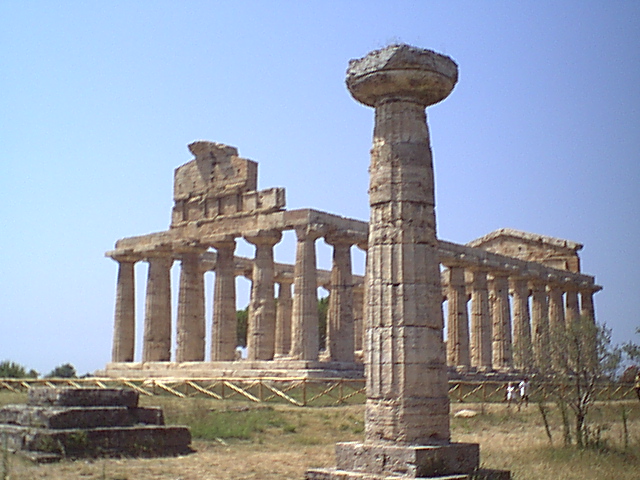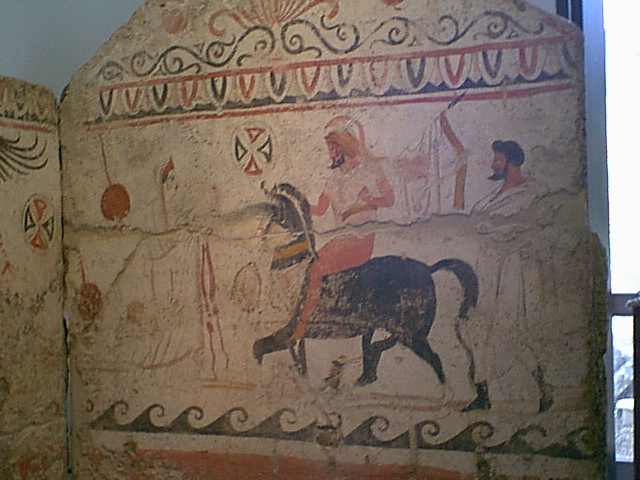Paestum, or Poseidonia, is an ancient Greek, and later Roman city. It is famous for its Greek temples, generally recognised as being the best preserved Doric temples in the world. It is located on the coastal plains S. of the Amalfi coast, some 80 km S. of Naples.
Paestum is the Roman name of the city. The original Greek name was Poseidonia.
Only a fraction of the original extension of the city has been excavated, just around the ancient city centre with the temples and public buildings. The major parts of the area is privately owned and has never been examined.
Paestum and the surrounding area is a UNESCO World Heritage site.
Foundation
Poseidonia was founded around 600 BCE, probably as a colony of Sybaris, which was a flourishing city on the Ionian Sea. The city was the northernmost Greek settlement in Italy, just 8 km from the River Sele that formed the borderline between Greek and Etruscan domination.
The city was originally located near the coastline, close to the mouth of a small stream, but there was no good, natural harbour nearby. The closest good harbours were at the mouth of the River Sele to the N. (where a Heraion, a sanctuary to Hera, has been found) and Agropolis 8 km to the S. It is likely that sailors have hauled their boats onto the beach if they haven’t used the more distant anchorages north and south.
What the site lacked sea-wise it had towards the hinterland. The land was fertile, water was abundant and important inland trade routes connected the city to the Greeks cities to the south and to the Etruscan cities to the north. The city grew on a combination of agriculture and trade.
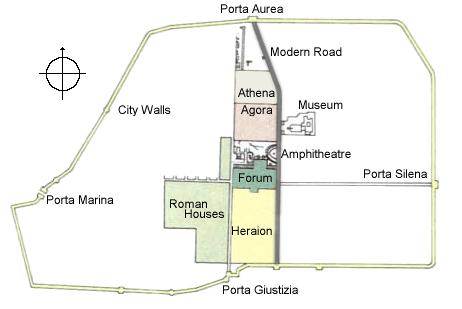
The outline of the city was determined from the beginning. The city sits on an elevated shelf of travertine that defines the somewhat irregular perimeter of the town, and defensive walls were erected around the entire area. These walls stretch for about 5 km with four major gates coinciding with the cardinal directions and several towers.
Poseidonia – The Greek City
The Greek period in Poseidonia lasted from the foundation around 600 BCE to around 400 BCE. The literary sources are completely silent about Poseidonia in this period, so all that is known about the city and its people comes from archaeology.
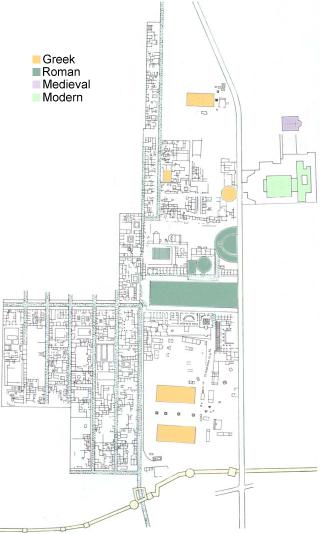
Little is known about the city plan of Poseidonia, since the currently visible plan is of Roman times, but it is fairly certain that the main road was the Via Sacra, which later became the cardo maximus in the Roman period. It leads from the S. gate, the Porta Giustizia, to the N. gate, the Porta Aurea, and it makes a few turns along the way, which is rather unusual. The road was not paved.
The main square of a Greek city was the agora, and the agora of Poseidonia has been identified about halfway along the Via Sacra. Close to the agora the bouleuterion, the circular meeting place of the city council, has been found.
In the S. part of the excavated area, near Porta Giustizia, a huge area was set aside as a Heraion, a enclosed sanctuary dedicated to Hera, the wife of Zeus. Here the settlers build the first major monument, the Temple of Hera I, c. 550 BCE, also known as the Basilica, build in the archaic Doric style.
In 510 BCE Sybaris, the mother city of Poseidonia, was sacked and destroyed at the hands of Croton, and it appears that sybarite refugees arrived in Poseidonia at this time. These refugees have been associated with the apparent rise in building activity in the following decades.
Just around 510 BCE an enigmatic construction was made on the Via Sacra, close to the agora. It is a half buried, underground shrine without an entrance. Inside rich grave goods were found, but no inscriptions, so it is generally assumed it is a heroon, the symbolic tomb of the heroic founder of the city.
The second temple to be build was the Temple of Athena, sometimes called the Temple of Ceres, just N. of the agora on the highest point within the city. It is from c. 500 BCE, in an archaic Doric style closer to the classical than the first temple. Adjacent to this temple stands a votive Doric column from around 550 BCE.
The last of the great temples is the Temple of Hera II, also called the Temple of Neptune. This temple, the largest of the surviving temples, from about 470-460 BCE, is stylistically much closer to the classic Doric style, but it retains some distinct archaic traits. It stands just besides the first Temple of Hera, build almost a century earlier, and was probably meant to replace it.
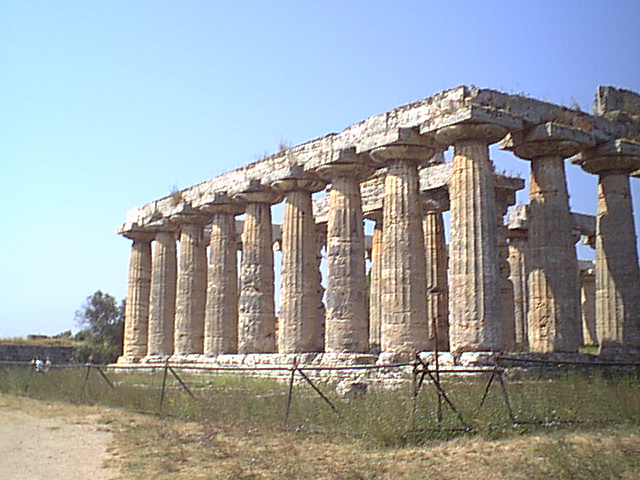
The sanctuary of Hera, the Heraion, with the two great temples also contained smaller temples, altars and sacred ponds. One temple might have been demolished by the Roman settlers when the Forum was build over a part of the sanctuary.
The name Poseidonia means the city was dedicated to Poseidon (Neptune), and Poseidon regularly appears on coins issued by the city, but no temple or sanctuary dedicated to Poseidon has been found. If could be located in the unexcavated parts of the city, outside the wall or closer to the sea.
South of the city, outside the Porta Giustizia, at the Località Santa Venere, a sanctuary of Aphrodite (Venus to the Romans) has been found. This sanctuary remained in use until the end of the city. Interesting to note how the name of the deity have survived in the name until now.
Finds of pottery, glassware and amphorae from Magna Graecia, from Greece itself and even from Egypt shows that Poseidonia had commercial relations throughout the Greek world from the very beginning.
Poseidonia struck its own coins from about 550 BCE, often showing Poseidon with the trident raised. At first the coinage was simple, using the incuse technique where the impression made on one side of the coin shows through on the other side. Just about the time of the arrival of the sybarite refugees the coinage changed, abandoning the incuse technique and adding the bull of Sybaris on the reverse.
Some of the necropolises of Poseidonia has been discovered in the surrounding countryside. A normal tomb was a rectangular hole cut in the rocky ground, sometimes lined internally with stuccoed travertine slabs. The cover would be a slab of travertine or, less often, made of tiles. Burial was by inhumation.
The grave goods found are modest if present at all. The men would often have with them a strigil for scraping off dirt and a small alabastron, an alabaster bottle for oil, both associated with athletic activities. The women most often have a lekythos, which is a small bottle for perfumed oil, or a skyphos, a drinking cup, with them. The vases found are most often in the red figure style from Athens.
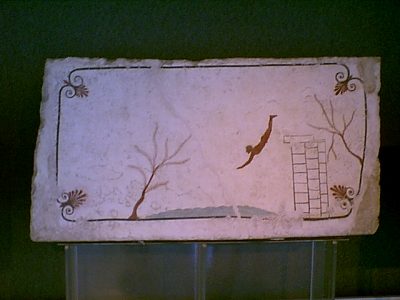
Some tombs were painted on the inside with scenes from the funeral and of the passage of the dead into the underworld. One particularly richly decorated tomb is the so-called Tomb of the Diver. The sides of the tomb was decorated with delicate frescoes of funerary banquets, and the inside of the lid has a picture of a man diving into the water from a tall structure, representing a plunge into the afterlife.
No weapons have been found in the tombs from the Greek period. This together with the apparent equality of the tombs has been interpreted a sign of a non warring, democratic society with limited social differences, but it could also mean that the graves of the upper class has eluded discovery. Nothing certain is known about the type of government of the city.
The Lucanian Conquest
Around 400 BCE the city of Poseidonia was conquered by one of the indigenous samnite peoples, the Lucanians, that hitherto had lived in the mountainous areas further inland. Little is known about the reasons for the conquest or exactly how and when it happened.
While the conquest did have an impact on life in Poseidonia, the basics remained much the same. The city was called Poseidonia as before, Greek continued both as the spoken and written language, the temples and sanctuaries were respected, the ancient cults and gods were venerated and trade relations continued as before.
No new major monuments were build in the Lucanian period, which has led to the belief that the period was one of decline compared to the previous two centuries, but this was not the case. The new ruling class just expressed itself in other ways.
The necropolises are very different from the Greek burials. The outer form is more or less the same, a rectangular hole cut in the rock, lined internally by slabs of travertine, but social differences are clearly marked and much more striking that in the earlier period, indicating a more stratified social system.
The tombs of the upper class are ostentatiously decorated with frescoes on the inside, and they contained very rich grave goods. Men were inhumated with their arms and armour and the tombs decorated with pictures of the deceased armed and on horseback, or with images of chariot races. Women were buried with their jewellery of silver, bronze and amber, and with vases, amphorae and other pottery. Some women were buried with a special kind of vase, the lebes gamikos, which is a very elaborately decorated bowl, a symbol of marriage.
The tombs of common people are much simpler, often just interment with no or almost no grave goods.
The second important change after the Lucanian conquest was the settlement pattern in the countryside. In the Greek period the surrounding area was sparsely settled, but after the Lucanian conquest settlement became much denser. This is no doubt a result of Lucanians moving into the territory of Poseidonia, and maybe the quest for more land to cultivate was the driving force behind the invasion.
The arts didn’t suffer as a result of the invasion, as can be seen from the tomb paintings and the pottery found. In fact, two of the most famous known artists from Poseidonia/Paestum are from this period. The pot painters Python and Assteas have signed several pots, vases and bowls found in and around Poseidonia, many of which are now in the Archaeological Museum in Paestum. Though they are from the Lucanian period, the artists are unmistakenly Greek. Their names are Greek, their pots are Greek in style and they signed their names in Greek.
The overall picture appears to be one of integration of a new ruling class into the existing social, cultural and economic fabric of the city. Lucanians settled in the countryside and they have had a decisive influence on political and economic matters in the city, the warlike images in their tombs are unambiguous, but they didn’t change the city and its population much. The Greek priests, administrators, merchants, artisans and workers continued to live and work in the city. Even if Poseidonia was removed from the Greek world politically, it remained Greek in every other sense.
Paestum – The Roman Colony
If the Lucanians didn’t change Poseidonia profoundly, the Romans did. They even changed its name, from Poseidonia to Paestum.
Poseidonia had been on friendly terms with Rome during the Third Samnite War (298-290 BCE), but during the war between Pyrrhus and Rome (280-275 BCE) the Lucanians sided with Pyrrhus, and after his defeat Roman retaliation was swift. As part of this revenge Poseidonia became a Latin colony with the name Paestum in 273 BCE.
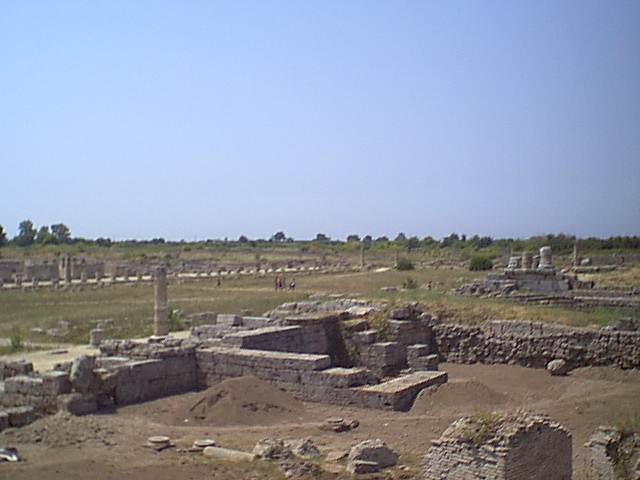
Exactly how the Romans took over Poseidonia is not known, but the result was devastating. Apparently it included a change of population, at least partially, when Latin colonists took over the city and its hinterland. What happened to the Greek and Lucanian citizens is unknown, but it is likely that at least a part of them were killed or enslaved to make room for the newcomers.
Paestum, therefore, was really a new city. Except for the physical surroundings there was almost no continuity with the Greek and Lucanian city of Poseidonia.
Rome created Latin colonies throughout the Italian peninsula, and they had an important role in the diffusion of Roman political culture. The colonies were created with replicas of the political, social and religious institutions of Rome itself, which was a major change compared to the Greek past.
As a consequence of these changes the old agora was abandoned and the ancient meeting place of the city council, the bouleuterion, was filled in and disappeared. New spaces for public administration, politics and worship were created nearby.
Roman colonies generally follow a common city plan. The four city gates are connected by two straight roads, the E.-W. decumanus maximus and the N.-S. cardo maximus, dividing the city into four parts, and the Forum, which was the political, social and religious centre of the city, was located near the compitum, the intersection of the two main roads.
The main N.-S. road in Poseidonia was paved and became the cardo maximus of Paestum. The E.-W. road has only been excavated just around the compitum, but it is likely that there was a previous road there too, which was enlarged and paved the Romans to make it the decumanus maximus.
The Roman Forum was placed in the N.-E. corner of the compitum, where it covers a part of the ancient Heraion, and apparently an older, smaller temple was demolished to make room for the Forum, which indicates that some customs and beliefs of the citizens of Poseidonia weren’t kept in high esteem by the new citizens of Paestum.
All the most important buildings of a Latin colony were placed around the square of the Forum. On the N. side is a new italic temple and the Comitium, which was the meeting place of the city council. On the S. side were a large hall, which might have been the curia, the meeting hall of the city senate, or a basilica, which is a public hall for legal proceedings, business deals and other similar activities. Besides the curia/basilica was the macellum, the food market of the town. The short W. end housed the lararium and possibly other public offices. The E. end of the Forum is buried under a modern road.
The Romans also built an amphitheatre, just NE. of the Forum. Only half of it is visible, the rest is under the modern road. N. of the Forum, on the cardo maximus, a gymnasium was build. It features a huge pool with a structure inside of unknown purpose.
Though the Romans forcibly changed the town to suit their purposes, even if it included tearing down ancient temples, they didn’t try to eradicate the Greek past of Paestum. The two great Temples of Hera, the Temple of Athena, the underground shrine and the sanctuary of Aphrodite outside the S. gate continued to be used and maintained.
Aerial photographs of the large parts of the town that has not been excavated, show a very regular system of roads and insulae. Such a system was typical in Roman colonies, so it is likely that the Romans reordered the entire city plan, but very little is known about the pre-Roman plan.
The ruins that are visible today are almost all of the Roman period, the three great temples and the underground shrine being the few exceptions.
The role of Paestum in regional trade suffered a decline in the Roman period. The trade between the cities of Greek origin to the S. and the cities of Latin and Etruscan origin to the N. traditionally passed through Paestum, but when the Via Popilia was constructed further inland in 133 BCE, the bulk of the N.-S. trace bypassed Paestum.
The economy of the city came to rely ever more on the agricultural produce of the surrounding plain and wood from the forests on the hills inland.
Each Latin colony had to provide material and manpower to the Roman war-machine, and the contribution of Paestum was ships, seamen and grain. Paestum remained a steadfast ally of Rome, and even in the times of Hannibal Paestum’s support for Rome was unwavering. At one occation the city even offered Rome the gold from the temples, which was, however, politely declined by the Roman senate.
Paestum became a quiet backwater. Life continued for centuries to come as it did in many Roman provincial towns, but Paestum wasn’t an important regional power anymore.
Decline and Disappearance
The decline of Paestum was slow. Important institutions appear to have been functioning until the 4th century CE, since inscriptions from 337 CE and 347 CE mention the election of city officials and meetings of the city senate. Of the same century are, however, signs of a breakdown of social conventions. Garbage pits were dug in the Forum, and limekilns were installed in abandoned private houses. The limekilns are a certain sign that parts of the town have been abandoned. They are used to convert limestone, including marble and travertine, into lime for use in the production of mortar and cement. Limekilns in the town means the the limestone comes from the town, i.e., they used building material and statues for the production. The town was cannibalising itself.
The reasons for the city’s decline are several, but natural causes appears decisive. The natural springs around Paestum, which fed the streams around the city, are highly calciferous, and calcium incrustations slowly cover everything that comes into contact with the water. The travertine shelf on which the city was build is itself a product of the calciferous waters. In spite of the efforts of Roman engineers, the springs and the drainage channels were continuously clogged by the calcium deposits, and the area surrounding the city gradually turned into swamps, with disastrous consequences for agriculture and health. The loss of arable land and the spreading of malaria lead to a steady population decline.
As the city contracted, the inhabitants huddled together on the high ground, around the Temple of Athena. The temple was transformed in to a Christian church, but abandoned when a new church, the Annunziata, was build in the 8th century, mostly of material taken from the abandoned parts of the town.
Papal documents show that Paestum was the seat of a diocese in the 7th century, but the bishop moved to Capaccio (Caput Aquae meaning a natural source of water) in the hills above Paestum. It is probably that most of the population moved with him.
Paestum was practically abandoned, except for a few farmers, shepherds and the workers of the remaining limekilns, which kept working well into the middle ages. Much of the artistic patrimony of Paestum have probably been destroyed in the limekilns.
Rediscovery
While knowledge of the presence of the temples was never completely lost, outside interest was only aroused in the mid 18th century, after the discoveries of Pompeii and Herculaneum.
Drawings of the temples started to circulate in Naples, London and Paris and the occasional traveller would come to see the temples, but the distance from Naples, the unhealthy environment and wretchedness of the locals kept the number down.
Proper excavation of the site started only in the early 20th century. Initially emphasis was on the temples, the S. part of the cardo maximus and the area around the Forum. Progress was slow, and after the World War II most of the area was still untouched as can be seen from aerial photographs taken by the allied forces.
More systematic excavations started in the 1950s and 1960s, where the remaining parts of the Roman city centre was uncovered, including the amphitheatre, the gymnasium, the underground shrine and several residential areas of Roman times.
Several burial ground from various times have been found in the surrounding area, and the excavations have yielded huge quantities of tomb paintings and grave goods, including many pieces of arms and armour. The most famous tomb is without doubt the so called Tomb of the Diver with a painting of a man jumping into the water from a high tower.
The Archaeological Museum of Paestum was build in the 1950s to house the rich finds from the city and from the cemeteries.
Excavations and restorations are continuing, but only a small fraction of the original area of the city has been explored. Much of the remaining land is privately owned and is being cultivated.
Visiting Paestum
The excavated parts of the ancient city can be visited during daytime, normally 9-15.
The archaeological museum is open a bit longer, 9-18:30.
Paestum can be reached by train or car. There are several hotels in the area, most of them near the coast.
Literature and links
John Griffiths Pedley: Paestum. Greeks and Romans in Southern Italy, Thames and Hudson, London, 1990.
Mario Napoli: Paestum, Istituto Geografico De Agostini, Novara, 1970.
Emanuele Greco et al: Poseidonia-Paestum, École française de Rome, 1980-99, 4 voll.: “La Curia”, “L’Agora”, “Forum Nord”, “Forum ovest-sud-est”.
Links
Photographs
The photographs for Paestum are all very old, taken with one of the very first digital cameras on the market, and the quality of the images is horrible.
I need to go back there.
Photo gallery for "Paestum"
There are 59 photos in this gallery.
-
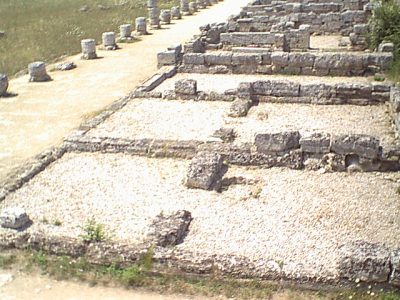
1999-08-05-123601 -
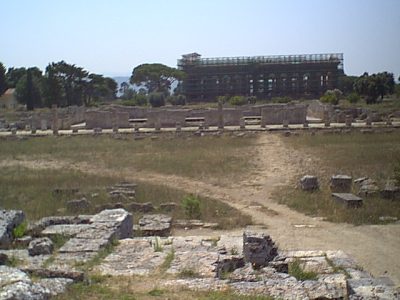
1999-08-05-123539 -
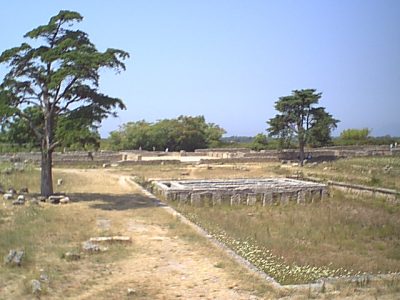
1999-08-05-123519 -
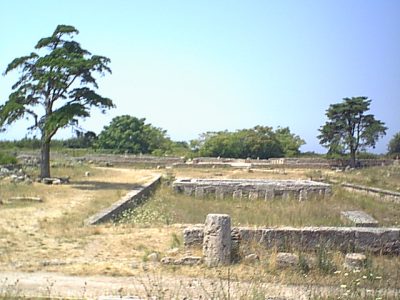
1999-08-05-123323 -
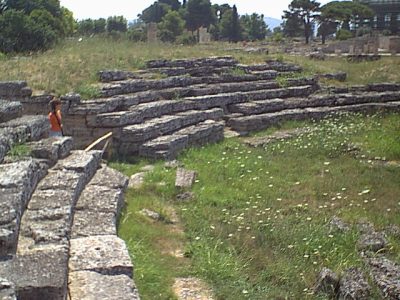
1999-08-05-123153 -
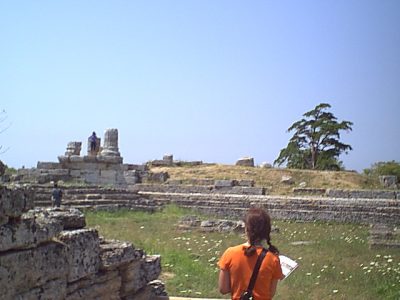
1999-08-05-123115 -
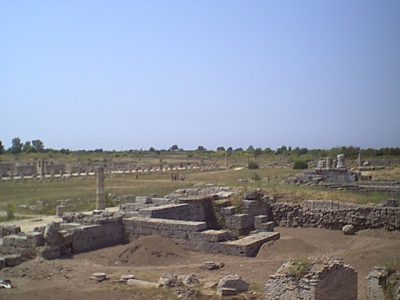
Paestum - View of the Forum from the Amphitheatre -
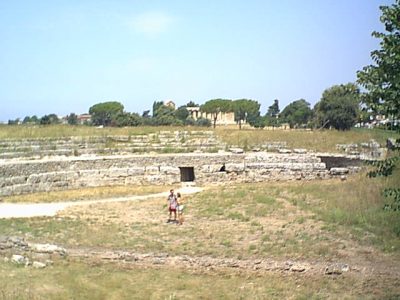
1999-08-05-122629 -
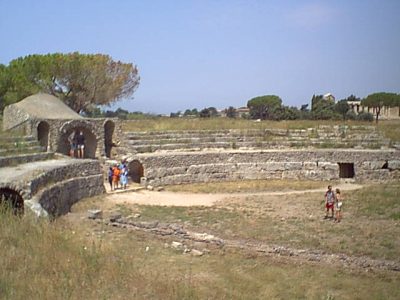
1999-08-05-122627 -
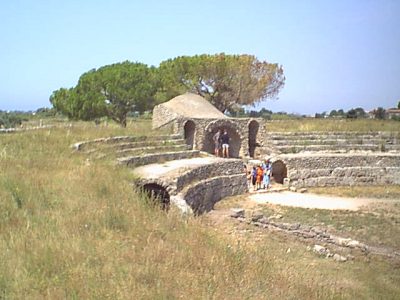
1999-08-05-122625 -
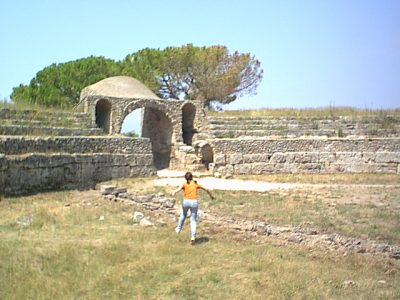
1999-08-05-122308 -
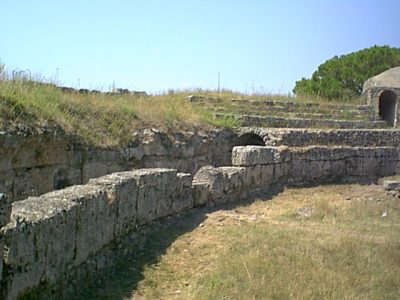
1999-08-05-122252 -
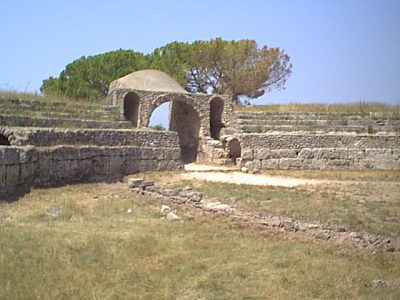
1999-08-05-122249 -
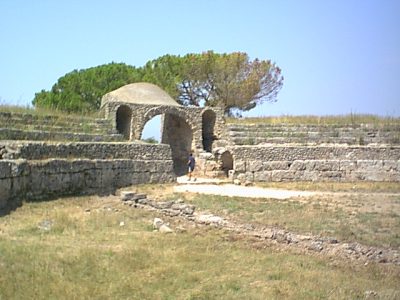
1999-08-05-122245 -
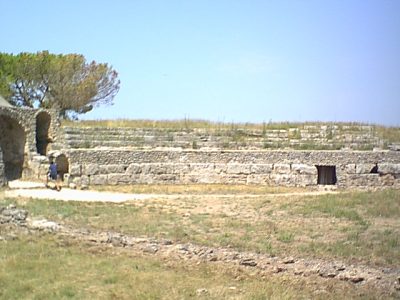
1999-08-05-122243 -
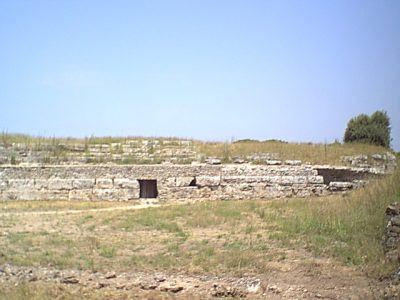
1999-08-05-122240 -
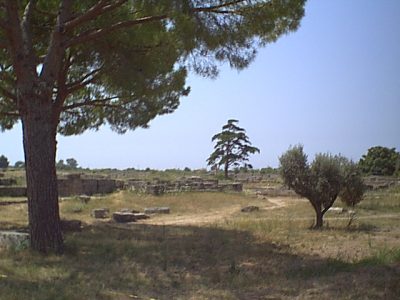
1999-08-05-122052 -
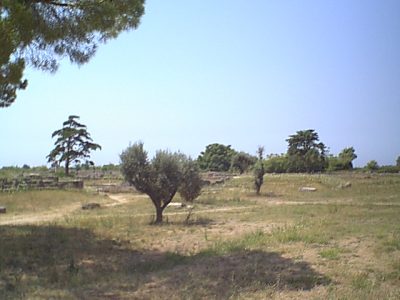
1999-08-05-122049 -
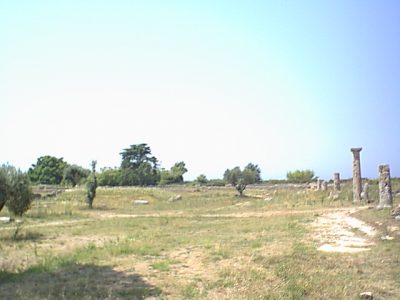
1999-08-05-122047 -
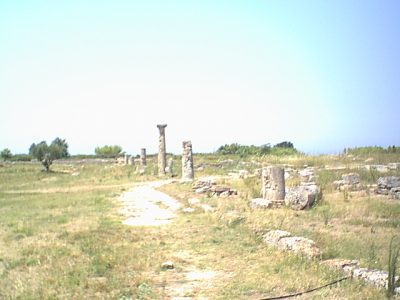
1999-08-05-122042 -
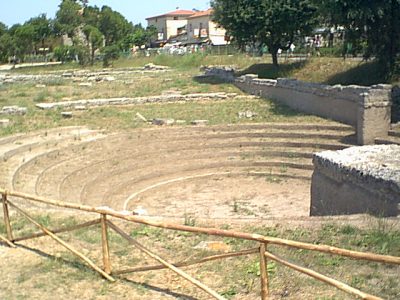
1999-08-05-121925 -
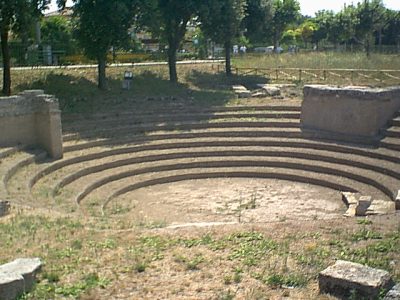
Paestum - the ekklesiastéria -
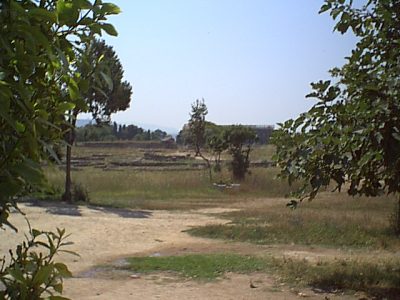
1999-08-05-121455 -
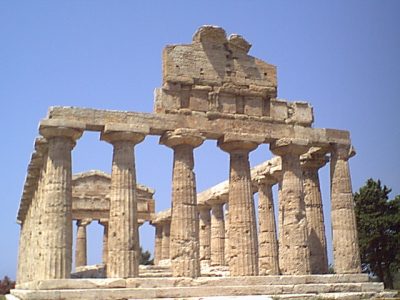
1999-08-05-121100 -
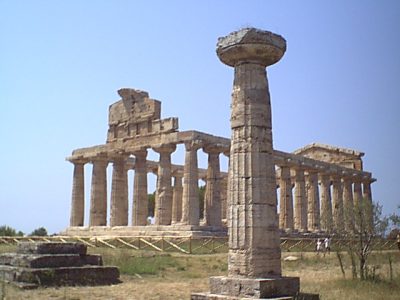
Paestum - Temple of Athena and votive column -
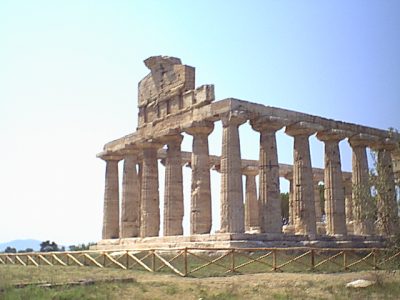
Temple of Athena in Paestum -
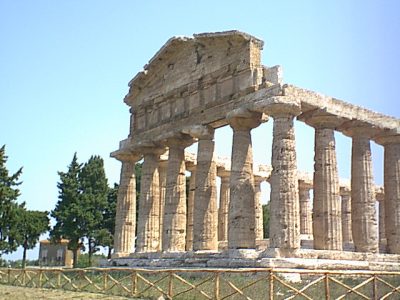
1999-08-05-120453 -
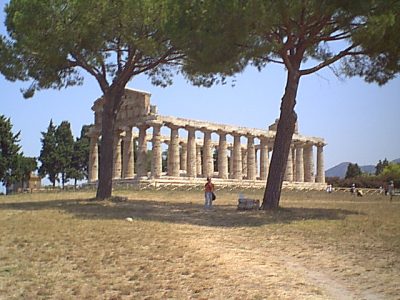
1999-08-05-120409 -
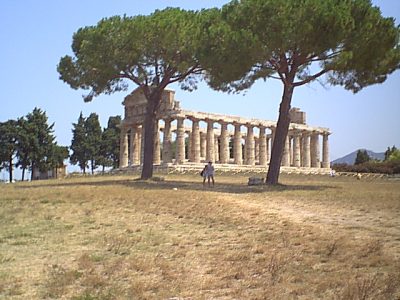
1999-08-05-120307 -
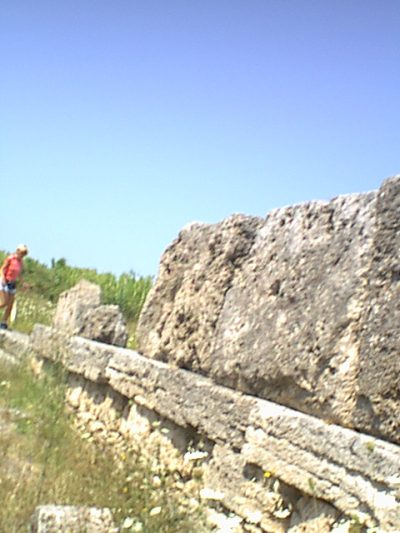
1999-08-05-120123 -
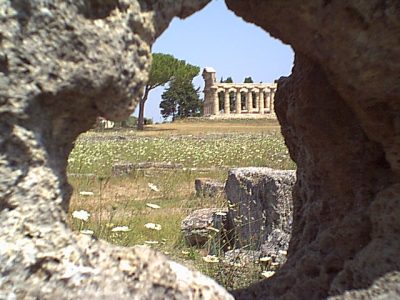
1999-08-05-120042 -
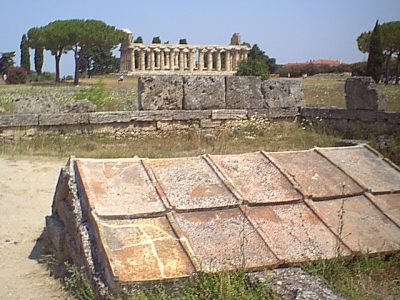
Paestum - The Underground Shrine -
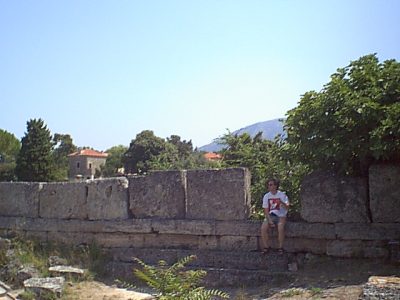
1999-08-05-115523 -
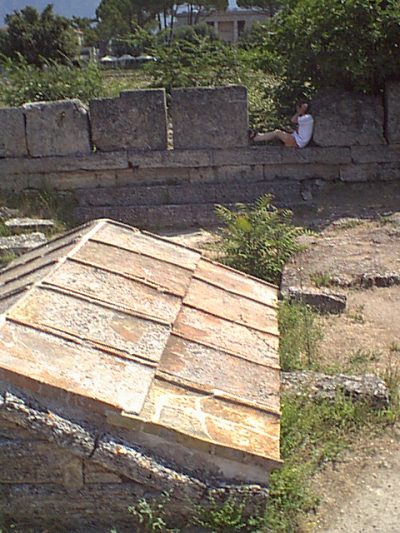
1999-08-05-115431 -
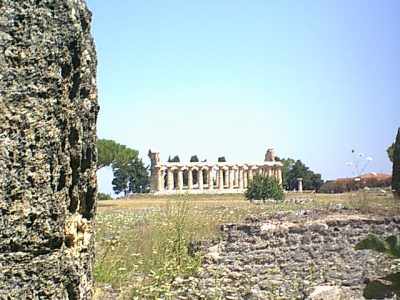
1999-08-05-115100 -
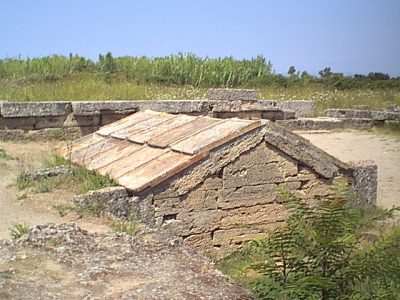
Paestum - Underground shrine -
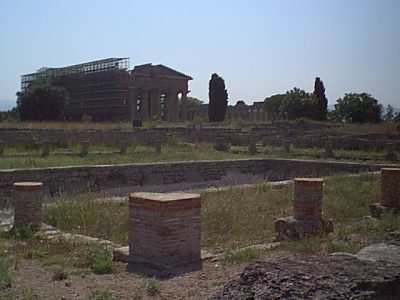
1999-08-05-112106 -
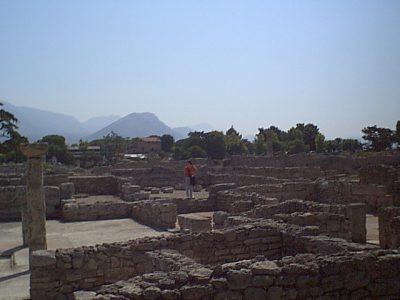
1999-08-05-111705 -
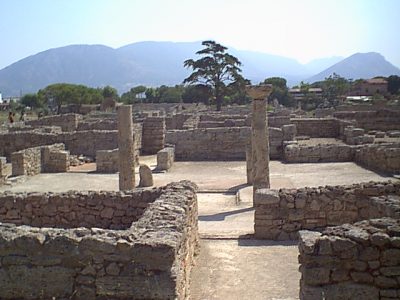
1999-08-05-111702 -
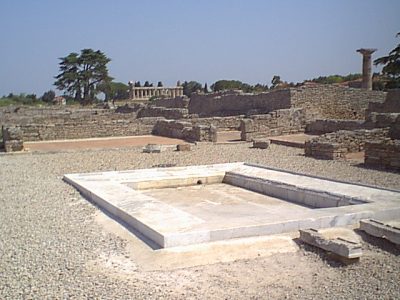
1999-08-05-110558 -
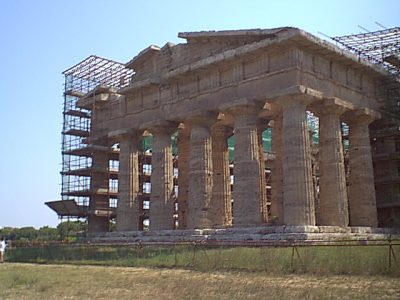
1999-08-05-110018 -
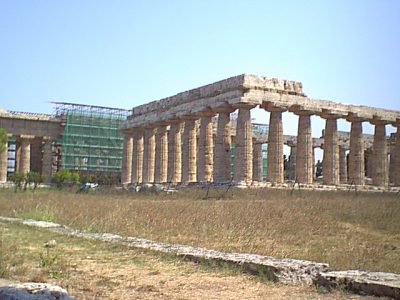
1999-08-05-105812 -
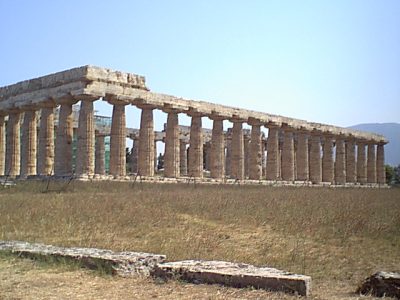
1999-08-05-105809 -
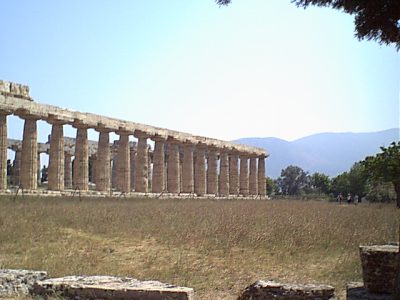
1999-08-05-105806 -
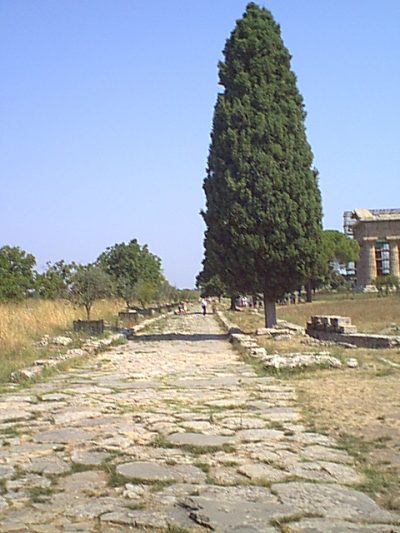
1999-08-05-105707 -
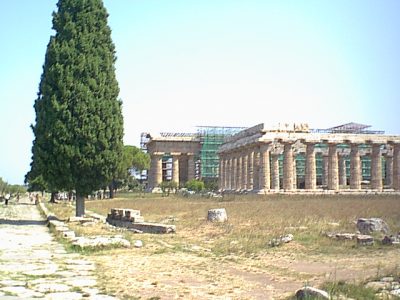
1999-08-05-105701 -
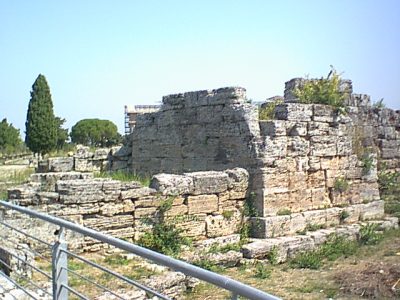
1999-08-05-105528 -
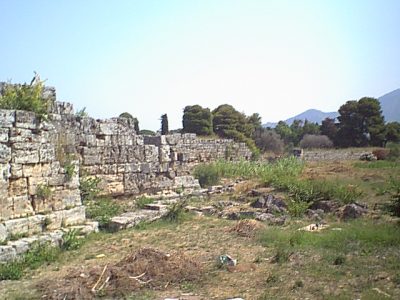
1999-08-05-105524 -
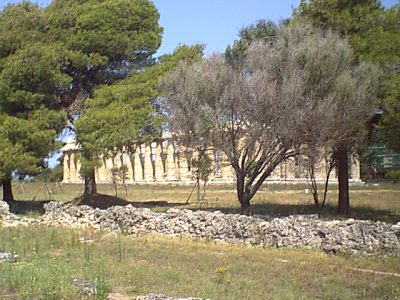
1999-08-05-104930 -
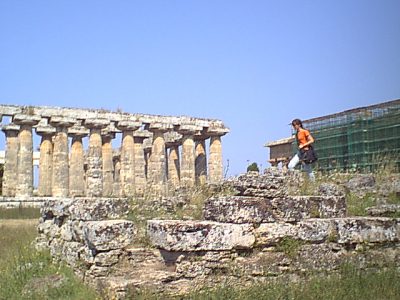
1999-08-05-104454 -
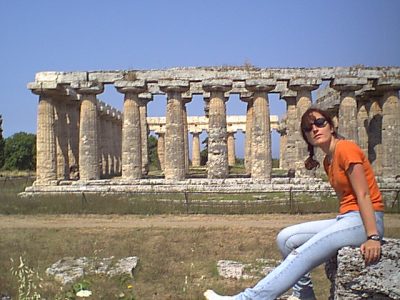
1999-08-05-104336 -
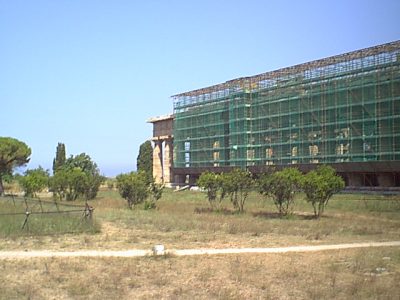
1999-08-05-104123 -
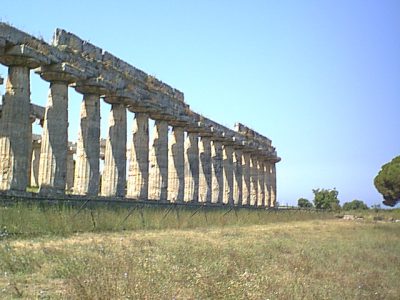
1999-08-05-104014 -
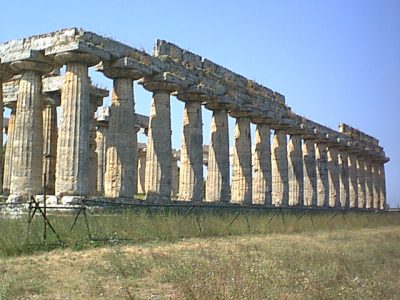
1999-08-05-104011 -
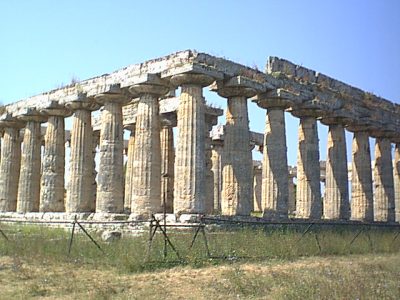
1999-08-05-104009 -
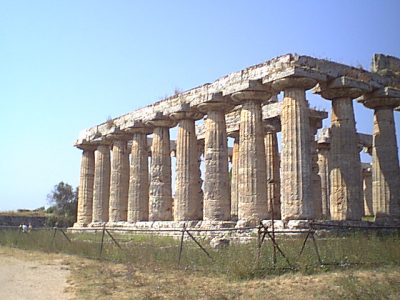
The Temple of Hera I, 550~BCE, in Paestum -
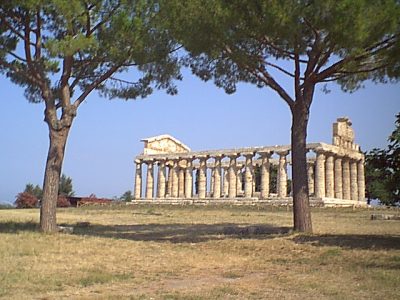
1999-08-05-095129 -
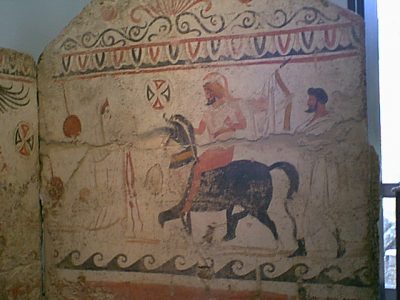
Archaeological Museum of Paestum - Lucanian painted tomb -

Archaeological Museum of Paestum - The Tomb of the Diver

